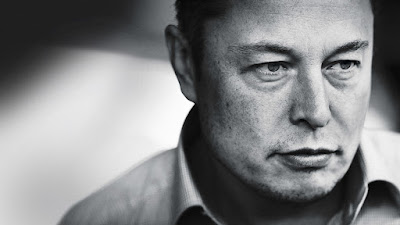 |
| "Okay, I exaggerated, it's this big!" |
"Space is pretty far out of the comfort zone of just about every VC on Earth," he admitted to Matt Marshall of the San Jose Mercury News. Instead, he was forced to put up his own money to build what would become the first reusable rocket in the private sector.
Musk and his new SpaceX team began to build two types of Falcon rockets. The name came from the "Millennium Falcon," the spacecraft in the Star Wars movies. The plan was to build a rocket by using existing technology and at the lowest possible cost. The Falcon I, for example, uses a pintle engine, which dates from the 1960s. It has one fuel injector, while standard rockets used by the U.S. National Aeronautics and Space Administration (NASA) generally use what is known as a "showerhead" design that features several fuel injectors. The company also needed a theodolite, which is used to align rockets, and instead of buying it new, they saved $25,000 by finding one on eBay.
There are other, equally expensive costs associated with rocketry. Since Musk's design would be reusable, the company needed to get back the rocket's first stage, which the rocket sheds as it leaves the Earth's atmosphere. The part usually falls into the ocean, according to safety plans, but retrieval at sea is expensive.
Microsoft co-founder Paul Allen (1953–) is ranked the seventh richest person in the world. Allen has used his wealth to finance SpaceShipOne. This private manned spacecraft, built by aircraft design pioneer Burt Rutan (1943–), was the first of its kind to reach suborbital space twice, which it did in 2004. For this two-time achievement, SpaceShipOne met the conditions of the $10 million Ansari X prize, established by the X Prize Foundation to encourage private entrepreneurship in aerospace.
Doom video game co-creator John Carmack (1970) founded a computer game development company called id Software in 1991. He is considered one of the most gifted programmers ever to work in the gaming industry. He was one of the creators of the successful Doom and Quake games, which sold millions in the 1990s and attracted legions of devoted fans.
In 2000, Carmack funded a new venture, Armadillo Aerospace in Mesquite, Texas, with the goal of building a manned suborbital spacecraft. It lost its bid to win the Ansari X prize when its vehicles ran into technical problems and crashed in 2004 and 2005.
In 1995, Jeff Bezos (1964–) launched Amazon.com, an online bookseller that became one of the most impressive successes in American business history. With an estimated personal fortune of over $5 billion, Bezos began donating some of his wealth to various philanthropic causes, but he also established an aerospace company. His Blue Origin, like Allen and Carmack's ventures, is also committed to manned suborbital space flight. His project is to be propelled by a mixture of hydrogen peroxide and kerosene and is a vertical-takeoff and landing-vehicle.
Companies that contract with NASA charge $250,000 to bring such parts back, but Musk found some ocean-salvage companies that knew how to handle sensitive material. He found one that agreed to do the job for just $60,000. The Falcon does not have a specialty computer on board, which can cost $1 million alone to install and maintain. Instead its computer is a basic one that uses the same technology as an automatic teller machine and costs just $5,000.


















